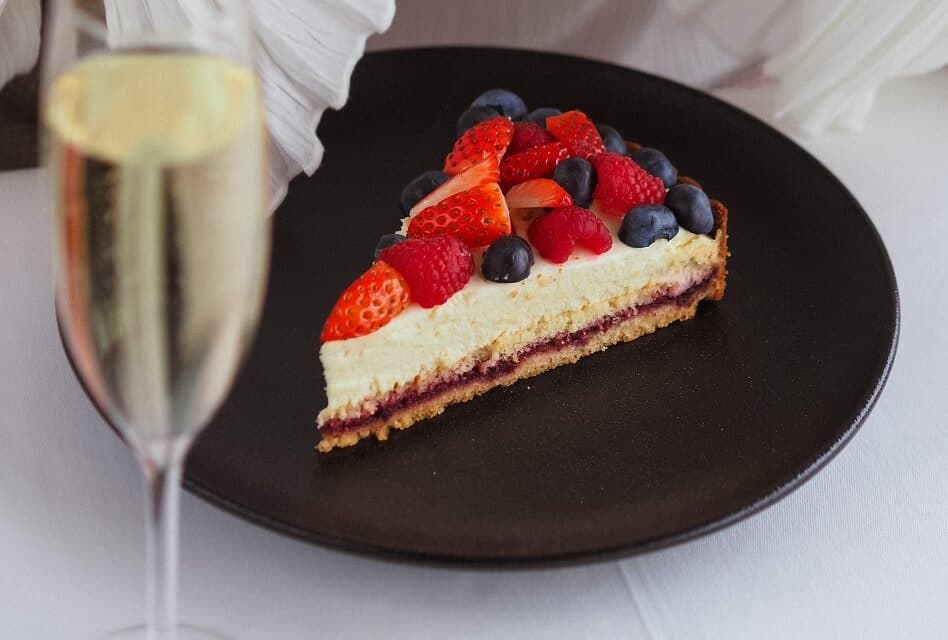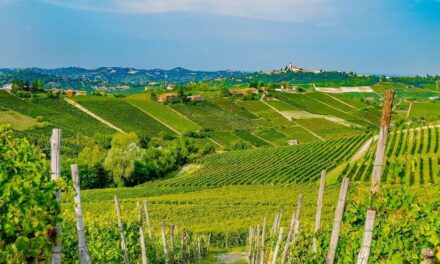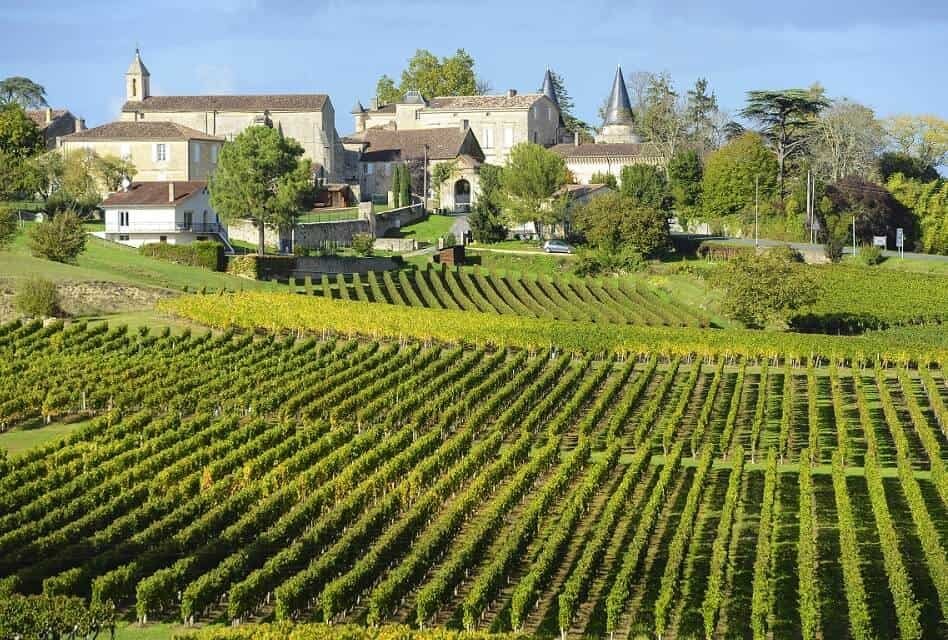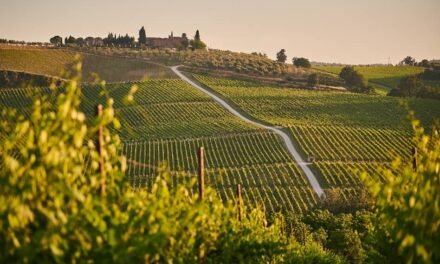Many people consider dessert the best part of dinner. And similarly, many wine lovers consider dessert wine the most delicious of all wines. But what exactly is a dessert wine?
Dessert wines are sweet wines that you can enjoy with or instead of a dessert. Vintners use various techniques to produce dessert wines that can be red or white, still or sparkling, and range from light to extremely rich.
Actually, there is no carved-in-stone definition for dessert wine. Some wine lovers put all sweet wines into the dessert wine category; others define an alcohol volume of at least 14% as the deciding factor. Both of these approaches are rather vague. To give you a thorough overview, we will include all sweet wines of a certain quality in this article, no matter the alcohol content.
THE DIFFERENT TYPES OF DESSERT WINE
Dessert wines come in many different variations. Roughly, we can distinguish five categories:
Is Dessert Wine Always Fortified?
Some dessert wines, such as Port, Madeira, or Commandaria, are fortified. That means that vintners add a strong spirit to the wine must before the fermentation is completed. As a result, plenty of natural grape sugar remains in the wine, giving it a very sweet taste. In addition, the spirit increases the wine’s alcohol content massively, often to volumes of around 20%.
But not all dessert wines are fortified. Especially when made from noble rot grapes or frozen grapes, dessert wines can be non-fortified and have relatively low alcohol volumes. The most famous examples of non-fortified sweet wines are Sauternes, Tokaji, and ice wine.
As a rule of thumb, we can conclude that most fortified wines are dessert wines (although there are some exceptions), but not all dessert wines are fortified.
HOW DESSERT WINE IS MADE
Vintners follow multiple methods to make dessert wines. They are roughly the same as table winemaking but differ in single aspects.
In the following paragraphs, we will briefly discuss how to make different wine types. For more detailed information, check out the linked articles about the specific wines.
Noble Rot Wines
Noble rot wines are a special sub-type of dessert wines. Their sweetness results from a fungus that infects the vines. It covers the grapes and dehydrates them but does not damage them seriously. These grapes only have a tiny bit of juice left when harvested, but this juice is incredibly sweet. And vintners can create delicious wines from them.
These are the most prestigious types of noble rot wines:
- Sauternes wines from the Bordeaux region in France.
- Barsac wines come from the same region. Their home is located just a few kilometers north of Sauternes.
- Vintners in the Alsace region make noble rot wines, too. Typically, they are called “Selection des Grains Nobles” (English: selection of noble berries).
- Tokaji wines are from Hungary. They come in different variations ranging from slightly to extremely sweet.
- Germany and Austria also produce delicious noble rot wines. They are labeled as “Trockenbeerenauslese” (English: dry berry selection) or “Edelfäule” (English: noble rot).
Ice Wines
The making of ice wines follows a similar pattern as noble rot wine production. But instead of a fungus, vintners rely on temperature to transform their grapes. They let the fruits out on the vines until the first frost. When that happens, most of the grape juice freezes. Only a tiny portion stays liquid, but this portion contains all of the grape sugar. And when pressed and proceeded, it produces highly concentrated wines.
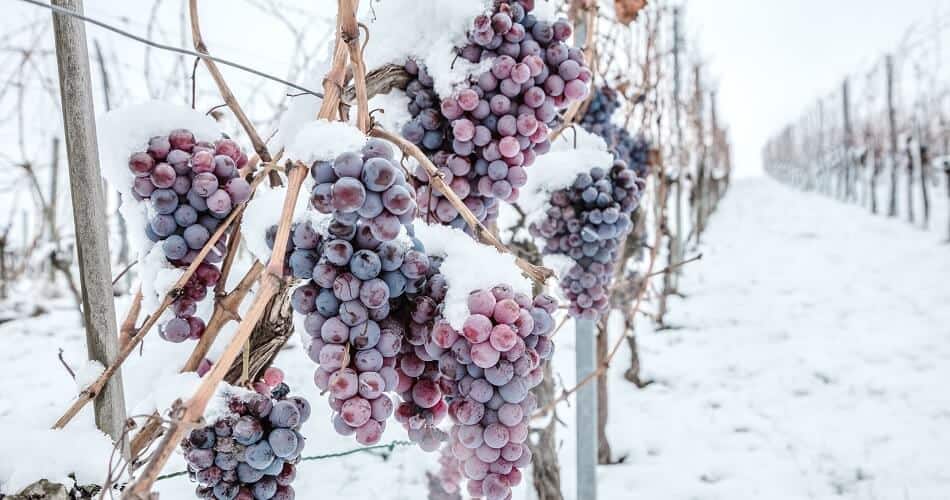
Frozen Grapes for Ice Wine Production
- Vintners in Germany and Austria have a long tradition of making Eiswein (English: ice wine). Most wines are made from Riesling grapes.
- In Canada, the production of ice wine started in the 1970s. Winemakers in Ontario and British Colombia predominantly use Vidal grapes for this purpose.
- Besides, you can find good ice wines from Washington State and New Zealand.
Late Harvest Wines
Winemakers who aim to make late-harvest wines let their grapes stay on the vines very long, too. However, they do not wait for frost or a fungus to infect them. Instead, they let the grapes enjoy additional weeks of sunshine, leading to higher sugar content. These grapes are not as sweet as noble rot or frozen grapes when harvested, but they contain significantly more juice. Great late-harvest wines come from several places. Most of them have a relatively cool climate:- German “Spätlese” (English: late harvest) wines are delicious examples of this winemaking approach. The same is true for late-harvest wines from Austria.
- In Alsace in France, winemakers produce “Vendage Tardive” wines (English: late harvest).
- American winemakers also make late-harvest wines. Especially those from Washington State and New York are worth trying.
Fortified Wines
The production of fortified wines is very different from all the other techniques we have discussed so far. In contrast to late harvest wines, ice wines, or noble rot wines, the deciding stage is not the growth period. Instead, winemakers define the wine’s sweetness during the fermentation process. Naturally, the yeast cells that vintners add to the wine must transform all grape sugar into alcohol. But when making fortified wines, winemakers stop this process prematurely by adding a spirit such as brandy. The concentrated alcohol kills the yeast cells so that the transformation stops. Consequently, plenty of grape sugar stays in the wine, making it a very sweet drink. At the same time, the spirit increases the alcohol content to 20% vol (and sometimes even more). After fermentation and fortification, many of these dessert wines undergo extensive barrel aging that might take several decades. As a result, fortified wines belong to the richest and most complex of all dessert wines. These are the most prestigious fortified dessert wines:- Port wines have a tradition of more than 300 years. The fortified wines from the region of Porto in Portugal come in many different variations. They can be sweet or dry, vintage or non-vintage, and they age for up to 40 years.
- Another Portuguese dessert wine is Madeira. It comes from an island with the same name. Madeira wines are similarly versatile as Port wines: They range from sweet to bone-dry, and you can find single-varietal and single-vintage variations as well as blended wines.
- The same is true for Sherry wines. The fortified wines from the Andalusia region in Southern Spain are predominantly dry. However, the sweet Pedro Ximénez styles are delicious dessert wines.
- Marsala is a fortified dessert wine from Italy. It was invented by accident rather than intentionally in the late 18th century. But the rich and sweet wine turned out to be so good that vintners on the island of Sicily continued to produce it intentionally. Today, you can find both sweet and dry variations.
- A little-known dessert wine called Commandaria comes from Cyprus. Vintners on the small island in the Mediterranean have produced wine since 800 BC. And their deliciously sweet beverages have been praised by historical figures such as King Richard Lionheart of England.
Sparkling Dessert Wine
If you are a sparkling wine lover, you can find many delicious wines with bubbles matching your preferences. Typically, the production of sparkling dessert wines follows the same techniques that vintners use to make dry sparklers. These are the most popular types:- Moscato d’Asti and Asti Spumante are two sweet sparkling wines from the Piedmont region in Italy. While Asti Spumante is a full sparkler, its cousin Moscato d’Asti is a semi-sparkling wine. That means its bubbles are more delicate and a little less intense. Moscato producers follow a unique method called the Asti Method. They freeze most of their wine must after crushing the grapes. And throughout the year, they unfreeze small batches to produce their wines continuously.
- Brachetto comes from Piedmont, too, but typically, it is of higher quality than Moscato sparkling wines. Similar to French Champagne, Brachetto undergoes the labor-intensive Traditional Method.
- Another Italian sparkling dessert wine is Lambrusco. Unlike Moscato wines, it’s a red sparkler. Vintners make entry-level styles following the Charmat Method, which is also the favorite technique of Prosecco producers. Others produce better styles by using the Traditional Method that Champagne producers developed.
HOW DOES DESSERT WINE TASTE?
Logically, dessert wines are sweet. The level of sweetness can differ drastically, though. Some wines have a somewhat subtle sweetness, for instance, Sauternes or Moscato wines. Others, such as Port or sweet Sherry, are more intense and often sweeter than soft drinks. And in some cases, they are so overwhelmingly sweet that you can only enjoy tiny portions of them. One famous example of these highly concentrated wines is Tokaji Essencia, which is typically served on a spoon instead of a glass. The aromas of dessert wine can vary as well. Many feature delicious notes of citrus, berries, and other fruits. With age, they develop more complex and often offer aromas such as caramel, honey, dried fruits, nuts, and spices.How Much Residual Sugar Is in Dessert Wine?
Dessert wines are very high in sugar, some even higher than soft drinks. They can range from 50 to more than 200 grams per liter. The following list gives you more details:DESSERT WINE TYPE
GRAMS OF SUGAR PER LITER OF WINE
Sugar Content of Dessert Wines
How Much Alcohol Is in Dessert Wine?
Dessert wines range from 6 to 25% vol. The alcohol content depends on the production process, so different types have different alcohol volumes:- Sherry tends to be the strongest of all dessert wines. It can have 15 to 22%.
- Marsala dessert wines have between 15 and 20% vol.
- Most Port wines have around 20% alcohol.
- The same is true for sweet Madeira wines. Typically, they range slightly below 20%.
- Sauternes has at least 13 and up to 15%.
- Ice wines are perceivably less alcoholic. They range from 6 to 13%, with German styles at the lower end and Canadian wines at the upper end of the range.
- Tokaji wines fall into the same range, with most wines having alcohol content of around 11%.
HOW TO STORE DESSERT WINE
When storing wines, no matter whether they are sweet or dry, you should follow these rules:- keep your bottles cool and protected from sudden temperature changes
- shield them from sunlight
- don’t store your wine next to aggressively smelling chemicals such as wall paint, cleaning agents, or heating oil
- avoid keeping them close to vibrating devices such as air conditioning or washing machines
- if sealed with cork, store the bottles lying on their sides
Can Dessert Wine Go Bad?
A dessert wine can go bad when exposed to sunlight, oxygen, vibrations, or aggressive smells for too long. Many types, especially fortified wines, have a higher resilience than table wines, though. In any case, you should provide optimal storage conditions to reduce the risk of spoilage.How Long Can Dessert Wine Last in the Fridge?
An open bottle typically lasts slightly longer than a bottle of table wine. Ice wine lasts 3 to 5 days, while Sauternes and other noble rot wines stay enjoyable for about one week. Fortified wines have a much longer life span after uncorking them. They last for one month at least, and most will be fine even longer. With alcohol contents of 20% or more, you might not even need to chill them in the fridge. In any case, you need to protect them from direct sunlight.HOW TO SERVE DESSERT WINES
As their name suggests, dessert wines are meant to be enjoyed as the last course of a dinner. You can either combine them with a dessert or drink them instead. And, of course, you can also have a glass on its own without any food nearby. In any case, the serving temperature is crucial for maximizing your drinking experience. Also, choose the proper glassware to give your dessert wine a chance to shine.What Is the Right Serving Temperature for Dessert Wine?
The optimal serving temperature depends on the specific type of wine. The following table gives you the details:DESSERT WINE TYPE
FAHRENHEIT
CELSIUS
Dessert Wine Serving Temperatures
What Is the Right Glass for Dessert Wine?
Sweet dessert wines are served in smaller portions than table wines. Otherwise, they could be overwhelming, especially when they are fortified. Logically, dessert wine glasses are significantly smaller than table wine glasses. For some types, you can find specific glasses designed to showcase the wine’s characteristics. For instance, there are special Sherry glasses, Port wine glasses, and Sauternes glasses. If you don’t own these particular glasses, you can also use a regular white wine glass. However, you should limit the served portion to 2 to 3 oz (60-90 ml). That is about half of the usual white wine serving.Should You Decant Dessert Wine?
Most dessert wines benefit from decanting because they can release their full aromas. Especially very old bottles also might contain sediments, and by decanting them, you can filter these sediments out. There are some dessert wines that you should not decant, though:- Ices wines should be cold when served. Decanting would cause them to heat up too quickly, so do not.
- Tokaji wines typically do not need decanting and will not improve in flavor.
- The same is true for Port wines, except for unfiltered vintage wines and very old bottles.

